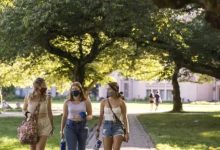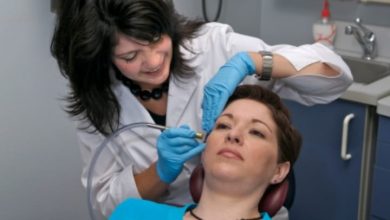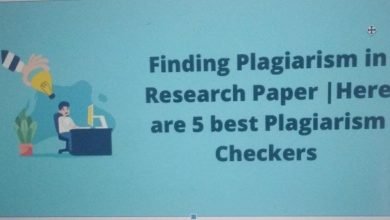Best Pharmacy Schools in California

California is the most populous state in the United States, with a population of roughly 39 million people. Pharmacists are continuously in demand to meet the healthcare demands of this big population. Pharmacists in the state are expected to number 32,520 by 2020, with an average annual pay of $146,070. You must complete a Doctor of Pharmacy program from one of the state’s authorized schools to become a licensed pharmacist. This article will treat the topic: “Best Pharmacy Schools in California”.
Without a doubt, pharmacy is a lucrative and diversified profession, with numerous chances for patient care, scientific research, and innovation. It is one of the most prestigious occupations in healthcare, and it has had a significant impact on the system.
If you want to work as a pharmacist, you’ll need to complete a university education. Candidates must, however, complete different standards in different nations before receiving a license to practice pharmacy.
To work as a pharmacist in the United States, you’ll need to get a Doctor of Pharmacy (Pharm.D) degree.
Related Post:Wildlife Biology Colleges and Careers
Pharmacists, on the other hand, play a crucial part in the healthcare team. They provide medications to patients and ensure that they are administered in the safest and most effective manner possible. They’re also in charge of making sure the doses are correct and that there are no potential drug interactions that could harm the patient.
What Does a Pharmacy School in California Teach?
Coursework is frequently different from one school to the next. As a first-year pharmacy student, you’ll most likely start with core courses. The fundamentals of biological, pharmacological, social, administrative, and clinical sciences will be introduced and exposed to you.
Students perform Introductory Pharmacy Practice Experiences in addition to classroom learning (IPPE). The IPPE allows students to put their newly gained knowledge into practice in a variety of contexts.
Students conduct Advanced Pharmacy Practice Experiences (APPEs) during the conclusion of the third year and throughout the fourth year, which are typically set in healthcare settings such as ambulatory care, acute medicine, community pharmaceutical care, and hospitals.
As a Pharmacist, where can I work?
After graduating from pharmacy school, there are a variety of sectors where you can pursue a profession.
However, a pharmacist’s traditional job should be in a drugstore to ensure that the public has safe and knowledgeable access to the proper pharmaceuticals.
Nonetheless, there are other sectors where a pharmacist’s services are in high demand. The following are some of them:
- Pharmaceutical businesses
- Health-care organizations, both governmental and non-governmental
- Pharmacy at a hospital
- Pharmacy in a medical center, for example…
List of Best Pharmacy Schools in California
University of California San Diego is a public university in California.
The Skaggs School of Pharmacy and Pharmaceutical Sciences at the University of California, San Diego, is noted for its concentration on research. Almost half of the 60 students who begin the program each fall will continue on to a postgraduate degree.
For the fall semester of the following year, the application deadline is November 1; potential individuals will be invited to an onsite interview in December. Late August marks the start of the fall semester.
The four-year Pharm D curriculum emphasizes interdisciplinary collaborations with the University’s medical school and other health science schools on campus, as well as emerging topics in the industry such as pharmacogenomics, computational biology, and bioinformatics, in addition to traditional pharmacology classes. Students begin clinical internships in hospitals, community clinics, and research organizations in San Diego and the surrounding area in their third year.
Related Post:Universities in Finland and Tuition
University of California, San Francisco
The University of California San Francisco School of Pharmacy is one of the most competitive pharmacy schools in the state. This pharmacy program is consistently ranked among the top 10 in the country by U.S. News & World Report. The School adopted a new three-year curriculum in 2018. A little more than 20% of the 500 people who apply to this school will be accepted.
For a fall semester that begins in late August, the application deadline is November 1. There is a waiting list at the school. Students will have a strong foundation in scientific ideas thanks to the curriculum’s emphasis on experiential learning as well as applicable patient care skills. The cardiovascular, respiratory, renal, and gastrointestinal systems are covered in Year 1, whereas psychiatry, infectious disorders, and oncology are covered in Year 2. At the end of Year 2, each student selects his or her own Discovery Project, which provides an opportunity for applied inquiry in a field of personal interest.
Western University of Health Sciences is a public university in Western Australia.
Western University of Health Sciences’ Pharm.D. curriculum prepares pharmacists to work with other professions in today’s rapidly changing health-care environment. Students have completed rotations in Hawaii, Illinois, New York, Arizona, Utah, and Thailand, among other places outside of Southern California.
Though practical experiences begin as early as the first year with a rotation through a community or hospital pharmacy, the majority of the first and second years are devoted to block learning, in which students are engaged in the intensive study of one topic area. In the third year, students begin intensive clinical rotations. Western University works with 350 different facilities, including county hospitals, commercial hospitals, VA facilities, and pediatric hospitals. Experiential learning opportunities in compounding pharmacies, chain drug stores, and individually owned pharmacies are also available through the program.
Touro University is a private university located in Touro
Touro University is a Jewish-sponsored higher education and professional education school. However, the University welcomes students of all faiths. Touro College of Pharmacy admits about half of the students that apply, and also has an early admissions program.
Students in the University’s College of Pharmacy participate in a unique 2+2 curriculum in which they spend their first and second years in a didactic classroom setting and their third and fourth years in clinical rotations.
Faculty members are urged to maintain an open door policy because classes are small. The curriculum places a heavy emphasis on community health, and some students may choose to pursue a concurrent MPH while also studying at the College of Pharmacy. Students are invited to participate in a variety of community-based activities such as free clinics and health screenings throughout their clinical rotations.
Related Post:List of Universities in Sweden
Loma Linda University is a private university in Loma Linda, California
Although students of all faiths are welcome at Loma Linda University’s School of Pharmacy, the university is part of the Seventh-day Adventist higher education system. Health-care professions are viewed as healing ministries at the university, and Christian ideals are emphasized in the classroom.
Details on the program: The application date for the fall semester is January 7th. The first year of the four-year program is dedicated entirely to academics. Clinical rotations begin in the second year, and students are required to complete a minimum of six Advanced Pharmacy Practice Experience rotations in their fourth and final years. Students who want to earn Master’s degrees in Bioethics or Health Informatics while working on their Pharm.D. can do so through concurrent graduate degree programs.
California Northstate University
CNUCOP is committed to providing modern educational programs and preparing prospective pharmacists for a competitive career in the healthcare profession. Clinical & Administrative, Pharmaceutical & Biomedical Sciences, and Experiential Education are the three completely equipped departments at the college, which is located in the exotic city of Elk Grove in Sacramento, California.
CNUCOP offers a four-year PharmD curriculum that includes sequential coursework provided via classroom lectures, independent study after the first year, lab work, and clinical experiences. Cell and molecular biology, medicinal chemistry, pharmacokinetics, pharmacoepidemiology, pharmacy legislation, and introductory level pharmacy practices are all covered in the first three years. Your final or fourth year will focus on advanced pharmacy practices in a number of settings, including hospitals, community pharmacies, general medicine, and other patient-care institutions.
FAQs
Why should I apply to a Pharm. D. program that is accredited by the ACPE?
When you apply to an ACPE Accredited Pharm. D. Program, you can be confident that you will receive a high-quality education that is nationally recognized for its educational standards and professional degree. Employers are always on the hunt for approved program grads, so you’ll have a much easier time landing that dream job.
Length of Program
The Pharm. D. program takes about four years to complete on its own. However, because of the pre-pharmacy curriculum requirements for the Pharm. D. need at least two to four years of undergraduate study, you will need six to eight years of college study to achieve a Pharm. D.
Tuition
Whether you are in-state or out-of-state will have a significant impact on your tuition costs. In California, the cost of a Doctor of Pharmacy curriculum typically runs from $150,000 to $250,000. For example, a Pharm. D. from University of California San Diego would set you back $161,708, while a Pharm. D. from Touro University will set you back $183,200.
Curriculum
A Pharm. The D. program’s curriculum is dynamic and is revised on a regular basis to reflect scientific and technical breakthroughs. It is a blend of obligatory and elective courses that is taught over the period of four years and differs from school to school. As an example, we look at the University of Southern California’s curriculum to get a sense of the kind of courses provided by pharmacy schools in California. Foundational courses in biological, pharmacological, social, administrative, and clinical sciences are offered during the first three years of the curriculum at USC. Students perform Introductory Pharmacy Practice Experiences in addition to classroom learning (IPPE).
Is the demand for Pharmacists high?
According to the Bureau of Labor Statistics, pharmacist employment is expected to expand at a rate of 6% from 2016 to 2026, which is roughly the same as the average for all occupations. More demand for pharmaceutical services will result from increased demand for prescription drugs.
In California, what is the GPA requirement for pharmacy schools?
For both the cumulative and pre-pharmacy courses, a 3.0 GPA is required. In both cases, however, the average GPA of admitted students is around 3.5.
Conclusion:
Making the decision to pursue a profession in pharmacy is a wise one. It is our sincere desire to see you succeed in your endeavor. As a result, this post has been made for you to address all of your questions about earning a Pharmacy degree in California and the finest Pharmacy school in California.
In fact, we sincerely hope you take advantage of it. You will be very happy if you follow this guide word for word. Please let us know if you find this post useful in the comments area.
Related Post:How to Prepare for the GRE at home
We hope this article: “Best Pharmacy Schools in California” will help you make an informed decision.







